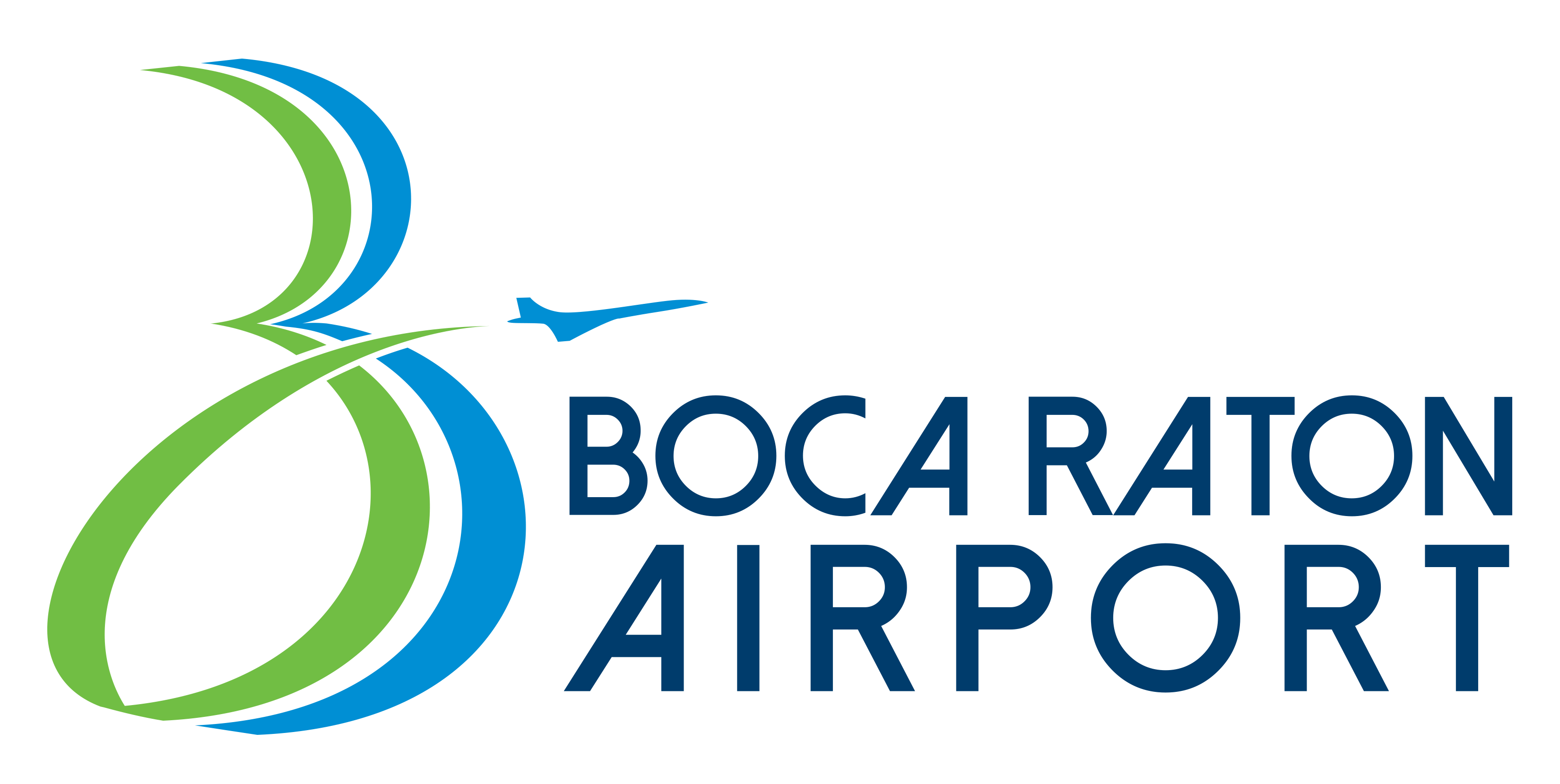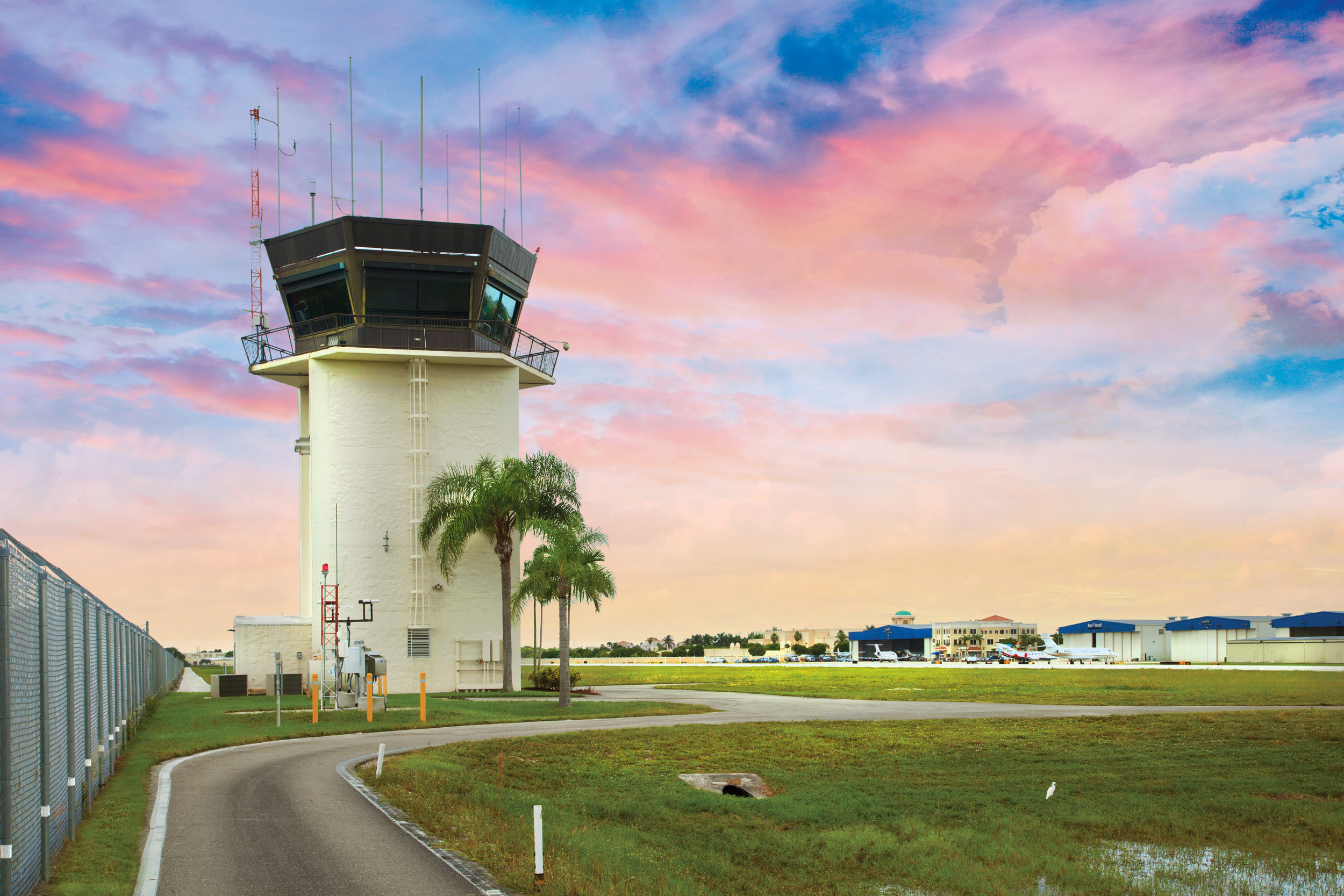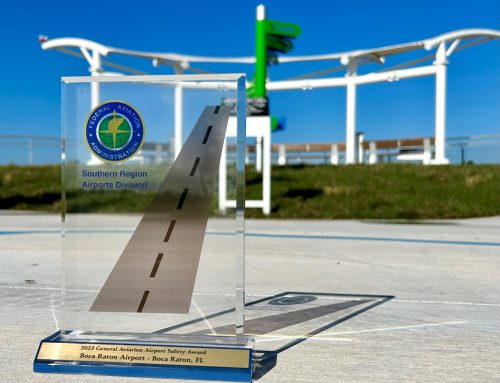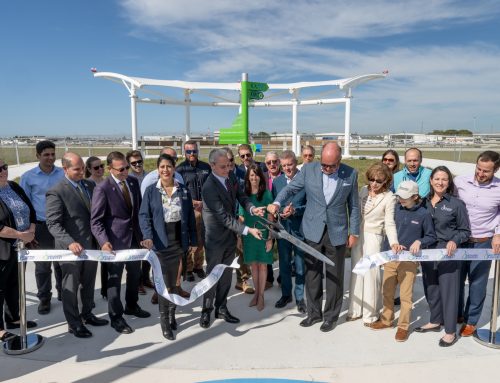The Impact of the Federal Contract Tower
The air traffic control tower is one of our biggest assets here at the Boca Raton Airport. It is an important service provided by ground-based air traffic controllers who help direct aircraft within the Airport’s controlled airspace and on the ground.
But did you know that Boca Raton Airport is one of 257 airports that participate in the Federal Contract Tower Program (FCT)? The Federal Contract Tower Program (FCT) was established in 1982 and to allow the Federal Aviation Administration (FAA) to contract with three private sector companies for the operation of certain towers. The companies in turn hire qualified air traffic controllers who are FAA-certified and meet FAA training and operating standards. Most contract controllers are former FAA or military controllers, and approximately 70% are veterans.
The primary advantages for eligible airports are enhanced safety, and improved air traffic control services at lower activity towers, and cost savings to the FAA. Due to budget constraints, air traffic services at these airports would not be possible if they were not part of the FCT.
A total of 257 airports participate in the program, compared with 331 FAA-operated facilities. Towers in the FCT program handle approximately 29% of all US tower operations, but account for only 11% of the FAA’s overall budget allotted to the air traffic control tower operations, providing the FAA and taxpayers annual savings of approximately $200 million.
The Boca Raton Airport Authority commissioned the air traffic control tower and began operations under the Federal Contract Tower Program in 2000. Since that time, the tower has played a vital safety role and has greatly contributed to the Airport’s success as a premier general aviation facility. Under the program, the Airport Authority is responsible for funding the initial construction costs and ongoing capital and maintenance expenses for the facility. The FAA funds the costs for providing air traffic control services.







